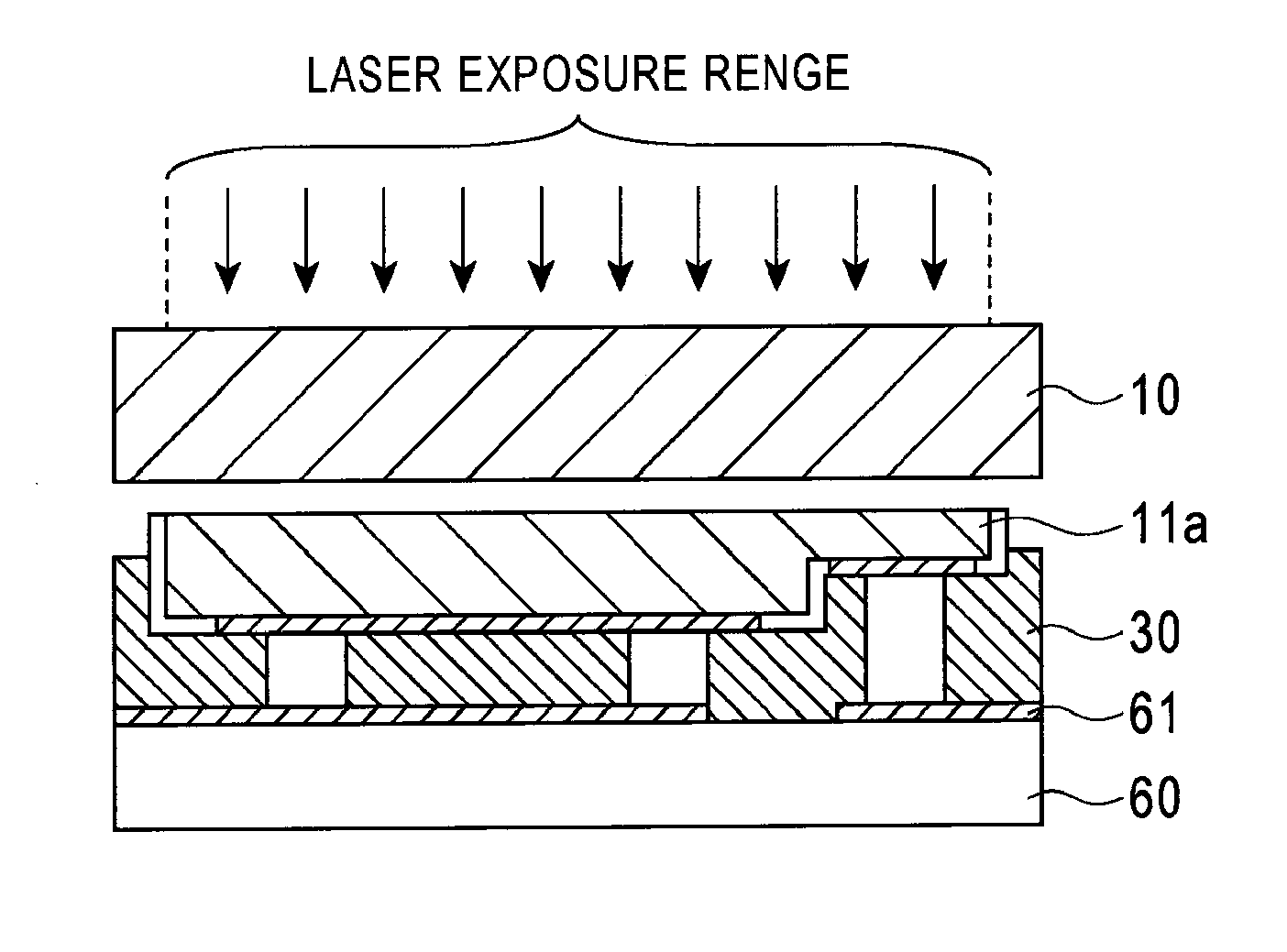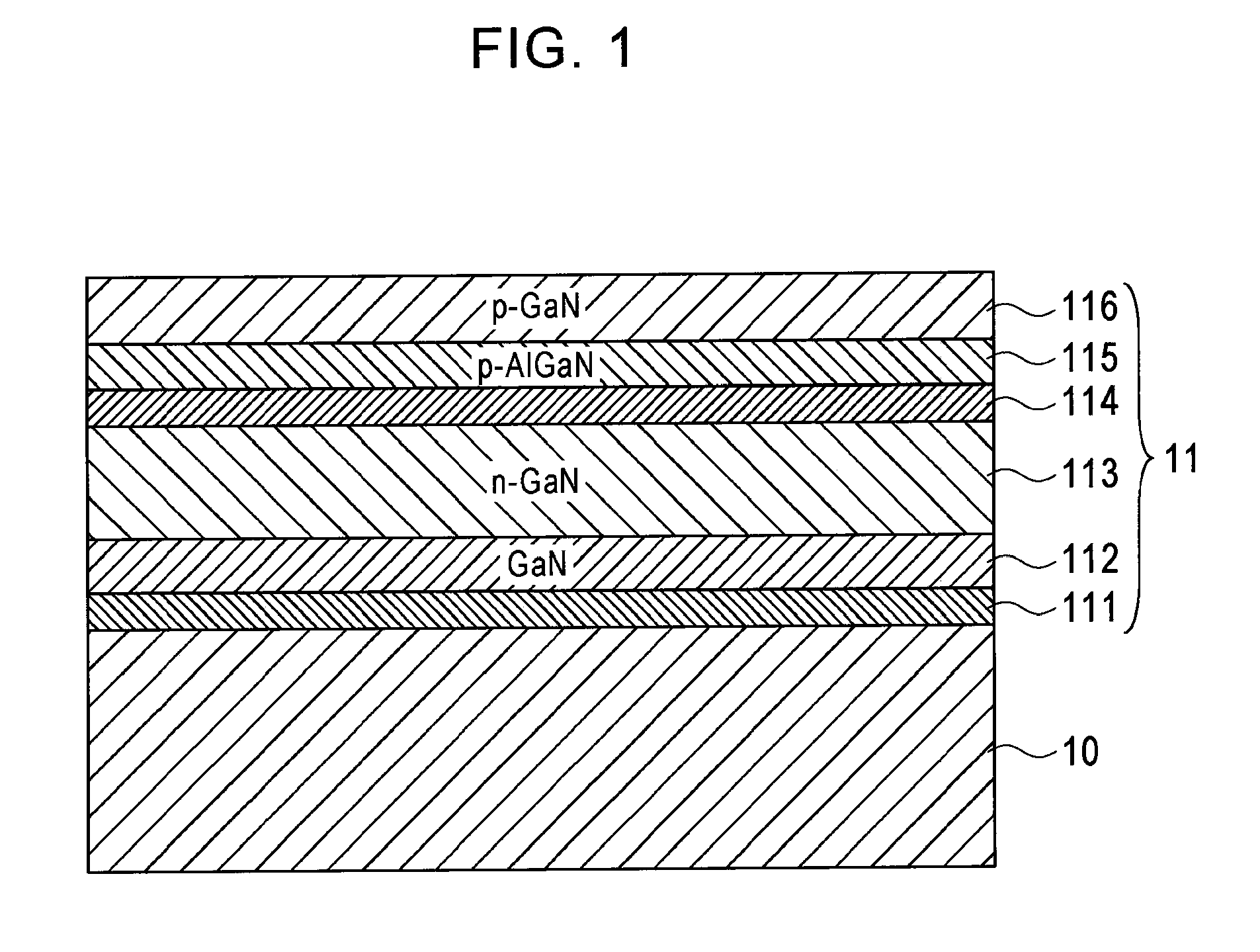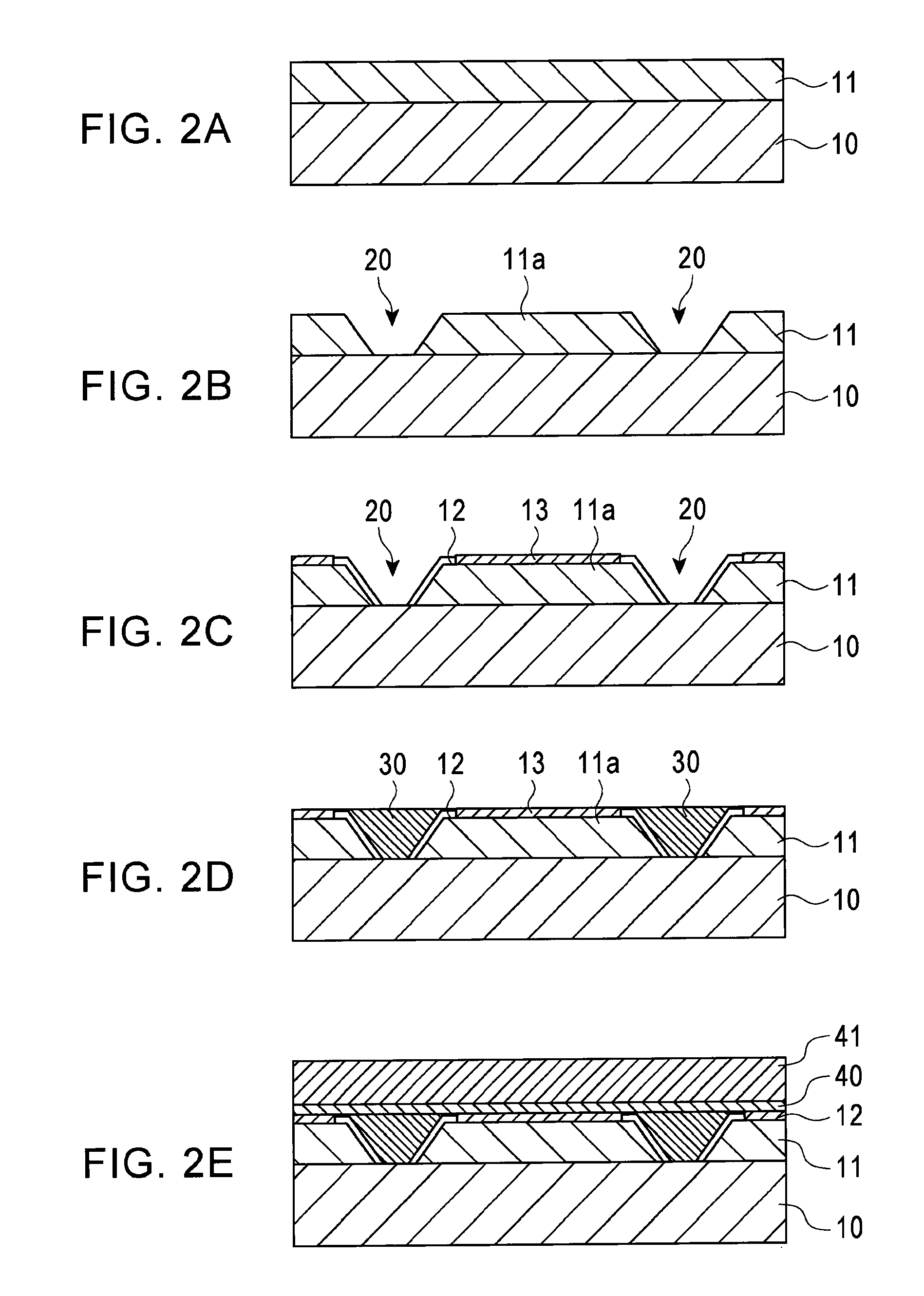Method for manufacturing semiconductor light-emitting device
a technology of semiconductor light-emitting device and manufacturing method, which is applied in the manufacturing of semiconductor/solid-state devices, semiconductor devices, electrical equipment, etc., can solve the problems of difficult discharge of n2 gas, less reliable, and increased heat generated by these light-emitting elements, so as to avoid the cracking of semiconductor films
- Summary
- Abstract
- Description
- Claims
- Application Information
AI Technical Summary
Benefits of technology
Problems solved by technology
Method used
Image
Examples
1st embodiment
[0023]FIG. 1 is a cross-sectional view representing the layer structure of the semiconductor film 11 according to an embodiment of the present invention. FIGS. 2A through 2E and FIG. 3A through FIG. 3D are cross-sectional views representing the method for manufacturing a semiconductor light-emitting device according to the first embodiment of the present invention. The semiconductor light-emitting device of the first embodiment has a configuration in which the semiconductor film whose crystals were grown epitaxially on top of the growth substrate is supported by Cu film formed using the electroplating method.
(Semiconductor Film Forming Step)
[0024]A sapphire substrate 10 is prepared as the growth substrate for the semiconductor film. The sapphire substrate 10 is heated for ten minutes at 1000° C. in a hydrogen atmosphere, and thermally cleaned. A semiconductor film 11 comprising a low temperature buffer layer 111, an underlying GaN layer 112, an n-GaN layer 113, an active layer 114, ...
2nd embodiment
[0037]FIG. 7A through FIG. 7E and FIG. 8A through FIG. 8E are cross-sectional views showing the method for manufacturing a semiconductor light-emitting device according to the second embodiment of the present invention. In the semiconductor light-emitting device according to the second embodiment, the semiconductor film whose crystals were grown epitaxially on top of a growth substrate are supported by an Si substrate prepared separately.
[0038]An AlxInyGazN semiconductor film 11 is formed on top of a sapphire substrate 10 by performing MOCVD on the surface of the sapphire substrate 10. The structure and growing conditions for the semiconductor film 11 are the same as those in the first embodiment (FIG. 7A). Next, element-dividing grooves 20 demarcating the various semiconductor light-emitting devices are formed in the semiconductor film 11. As in the first embodiment, these element-dividing grooves 20 are formed by performing dry etching using, for example, Cl2 plasma. The semicondu...
3rd embodiment
[0048]FIG. 9A through FIG. 9E and FIG. 10A through FIG. 10B are cross-sectional views showing the method for manufacturing a semiconductor light-emitting device in the third embodiment of the present invention. In the semiconductor light-emitting device of the third embodiment, a semiconductor film 11 whose crystals were grown epitaxially on top of a growth substrate is a flip-chip connected to the top of a submount. The semiconductor film is formed on the surface of a sapphire substrate 10 using MOCVD. The structure and growing conditions of the semiconductor film are the same as those in the first embodiment. Afterwards, the n layer is exposed by etching the semiconductor film via a predetermined resist mask. Next, element-dividing grooves 20 are formed in the semiconductor film to demarcate the individual semiconductor light-emitting devices. The semiconductor film can then be divided into sections 11a which are 1000 μm on a side. Next, the p electrodes 13 and n electrodes 14 are...
PUM
 Login to View More
Login to View More Abstract
Description
Claims
Application Information
 Login to View More
Login to View More - R&D
- Intellectual Property
- Life Sciences
- Materials
- Tech Scout
- Unparalleled Data Quality
- Higher Quality Content
- 60% Fewer Hallucinations
Browse by: Latest US Patents, China's latest patents, Technical Efficacy Thesaurus, Application Domain, Technology Topic, Popular Technical Reports.
© 2025 PatSnap. All rights reserved.Legal|Privacy policy|Modern Slavery Act Transparency Statement|Sitemap|About US| Contact US: help@patsnap.com



